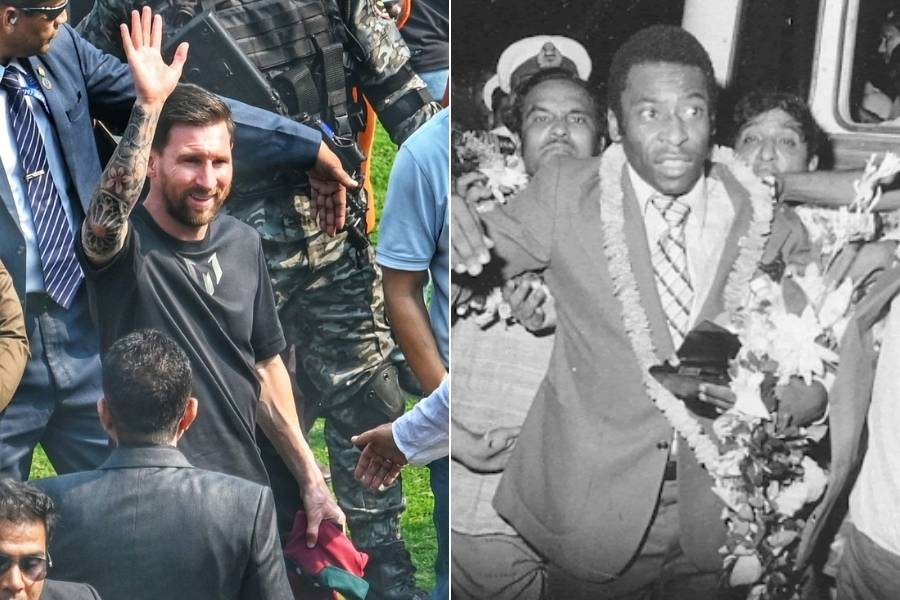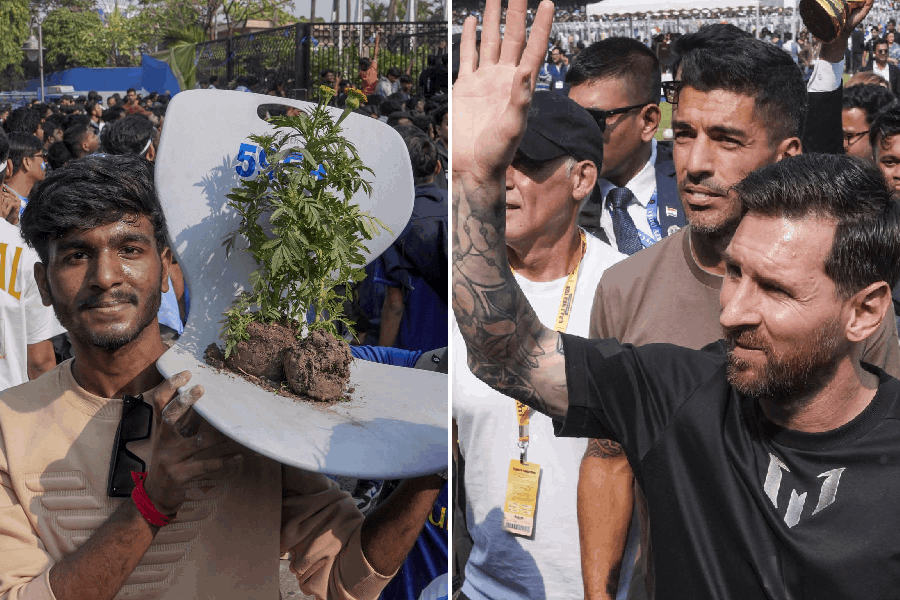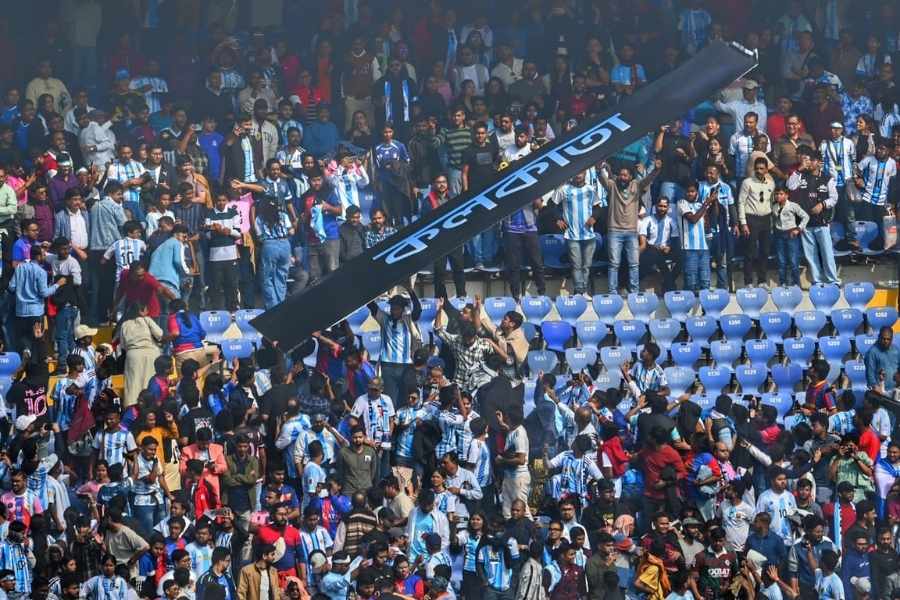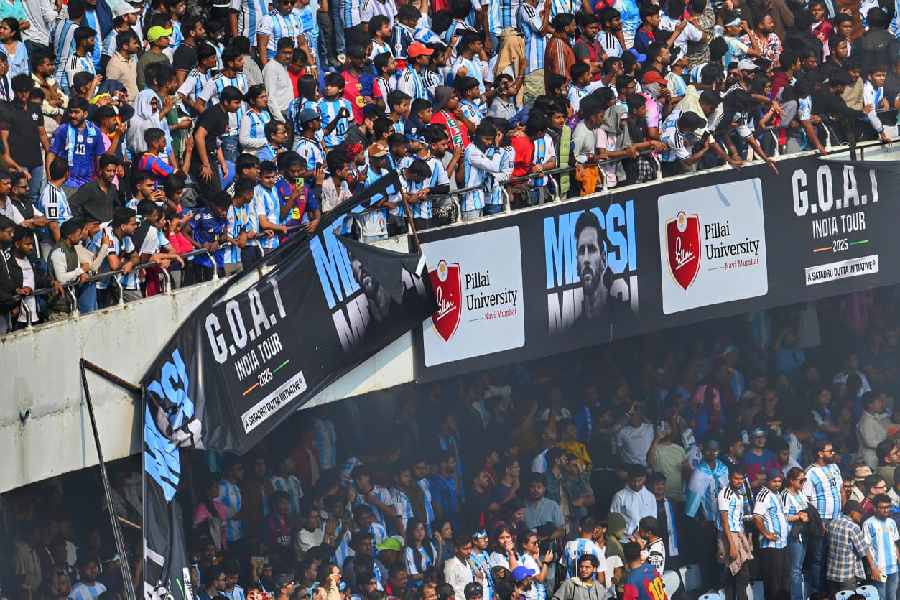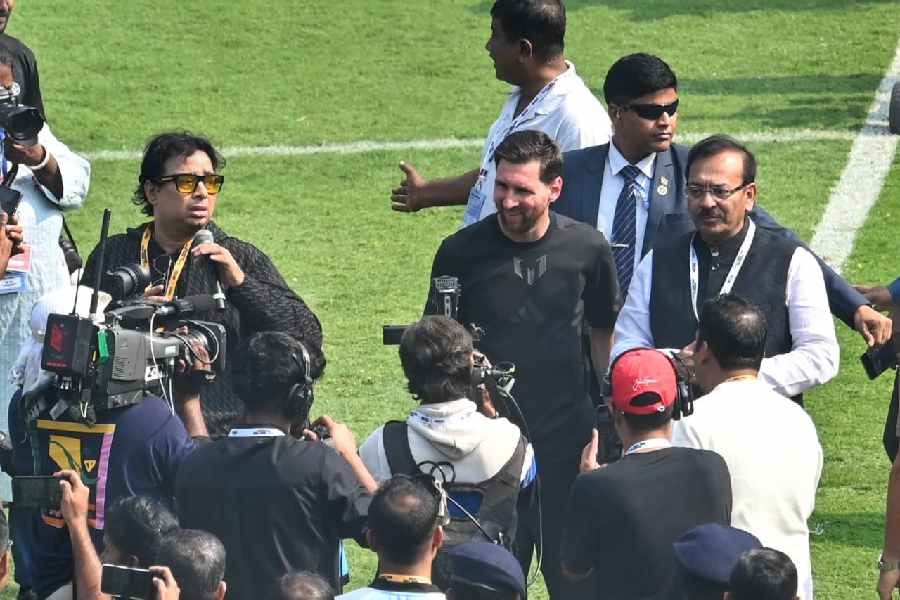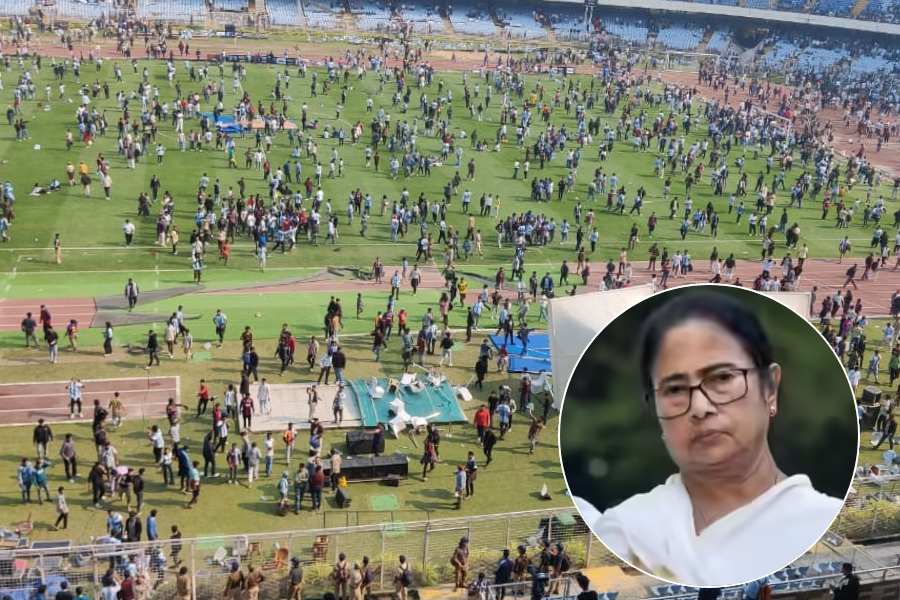 |
| Arya’s degree in history came in handy while compiling History in the Making, The Visual Archives of Kulwant Roy |
 |
| Pix by Rupinder Sharma |
A flashback to 1945, the Shimla Conference: There’s Congress President Maulana Abdul Kalam Azad riding a rickshaw down a Shimla road. Flip a few pages and fast-forward to 1947: Mahatma Gandhi addresses a gathering of the All India Congress Committee session. Move on a few years. In 1953, there’s a pensive-looking Pandit Jawaharlal Nehru, attired in spotless white cricket gear, padded up and sitting with his chin resting on his cricket bat.
It’s a visual documentary on the history of India through the crucial events of 1930s, ’40s and ’50s. History in the Making, The Visual Archives of Kulwant Roy is a treasure trove of 300 black & white and sepia-tinted photographs all captured by the lens of photojournalist Kulwant Roy.
Put together by ace lensman Aditya Arya and enlivened with text by historian Indivar Kamtekar, the book is a collector’s item. And it’s complete with little touches like some of Roy’s original captions and even the imprint of his own rubber stamp on several pages.
Arya says that this visual archive includes many unpublished pictures of national leaders and events of that era. And one of the most historic visuals is that of the three leaders — Nehru, Mahatma Gandhi and Sardar Patel — huddled in animated discussion. “It’s one of the rarest and most historic shots of the book,” says Arya.
For Arya, the 335-page coffee table tome (HarperCollins Rs 6,000) was a labour of love. Arya inherited the priceless photographs from Roy, a family friend, who left him trunks full of old photographs and negatives before he died of cancer in 1984. Roy’s cameras — a Speed Graphic camera, a Yashica 120mm twinlens reflex camera and a Leica 35mm camera — had documented the eventful years immediately before and after Independence.
 |
 |
 |
| (Top) Roy in Japan, 1961; (middle) Indira Gandhi and Zulfikar Ali Bhutto at the Simla Summit in 1972; (above) Sardar Patel, Mahatma Gandhi and Jawaharlal Nehru (seated right to left) |
His lenses captured giants like Nehru, Gandhi, Sardar Patel, Khan Abdul Ghaffar Khan, M.A Jinnah, and many other leaders, party workers and crowds.
But, the pictures lay forgotten in boxes for some 25 years after Roy’s death, till Arya began restoring and cataloguing them. “When I got the pictures I was just a budding photographer and too busy to dig into old stuff,” he says looking back.
It was only in 2007 that Arya finally investigated the old trunks that were lying in his Gurgaon home. The first visual Arya stumbled upon was one of the Muslim League. He was rivetted — and worried as most of the negatives and prints had started to get spoilt. One look at the pictures and he knew that he had to drop everything else and put them together in a book. Arya chucked his regular assignments as a corporate photographer and took up the task of restoring the visuals.
It was an uphill task and Arya soon ran out of funds even as he was buying equipment to restore the pictures. He was considering donating the photos to a foreign university when an affluent donor stepped forward. Arya recalls: “I got a call from someone who stopped me from doing anything like donating the pictures. He insisted that I simply couldn’t give away the visuals as they belong to this country.’’
 |
 |
| (Top) Jackie Kennedy with Nehru, whose guest she was for a couple of days during her stay in New Delhi in March 1962; (above) Jawaharlal Nehru bids farewell to grandson Rajiv before setting off on a European tour sometime in the 1950s |
The man in question was Suresh Neotia, the 73-year-old, Calcutta-based industrialist. Neotia, chairman of Gujarat Ambuja Cements, met Arya and immediately wrote out a cheque for Rs 50 lakh and asked Arya to continue in his efforts to preserve the photographs.
What prompted Neotia to do what he did? “The pictures were taken at the most critical and important period of our history. I felt that our future generations must see the photographs of those who gave us our freedom,” he says.
Bringing the book to life meant long hours of work for Arya. “It was tough sorting out the visuals and then arranging them in historical order,” he says. But his degree in history came in handy.
Arya converted his basement to carry out the restoration work. He installed advanced machines for scanning and imported a state-of-the-art machine called a Raid Storage System that comes with multiple hard drives with a capacity of 6 TB or 6000 GB. He also attended a workshop for archival management sponsored by the ministry of culture.
As he went about the restoration, last year he set up a foundation called India Photo Archive Foundation to help people preserve rare photographs. Neotia is the foundation’s trustee.
The book is divided into 12 chapters in order of historical events with the opening chapters like Moving Towards Power capturing the events that took place in the late ’30s. You’ll find Nehru — wearing khaki shorts — heading to attend a Congress Seva Dal Volunteers rally in Kanpur.
Away from the hustle and bustle of power and on a slightly quiet note, you’ll find Nehru on horseback, in Mussoorie (1959) going to meet the young Dalai Lama. Nehru’s different moods and moments are captured in the chapter, The Arrival of Authority.
 |
| Jawaharlal Nehru at a cricket match between the Prime Minister’s and the President’s teams in 1953 |
In Arrivals and Departures, you see Nehru receiving various world dignitaries: puffing on a cigarette in the company of Marshal Tito, welcoming Eleanor Roosevelt in 1952 and sharing a jovial moment with Jackie Kennedy in 1962. Then there’s that famous photograph of Indira Gandhi and Zulfikar Ali Bhutto at the Shimla Summit in 1972.
In Quiet Moments, there’s Nehru stroking the cheek of his young grandson Rajiv, in 1950. In another, Nehru is seemingly carefree as he plays holi with Govind Ballabh Pant and in another frame with his daughter Indira beside him.
Arya sums up: “I connect history with visuals and Indian history would perhaps be pale and uninteresting without visuals such as these.”


